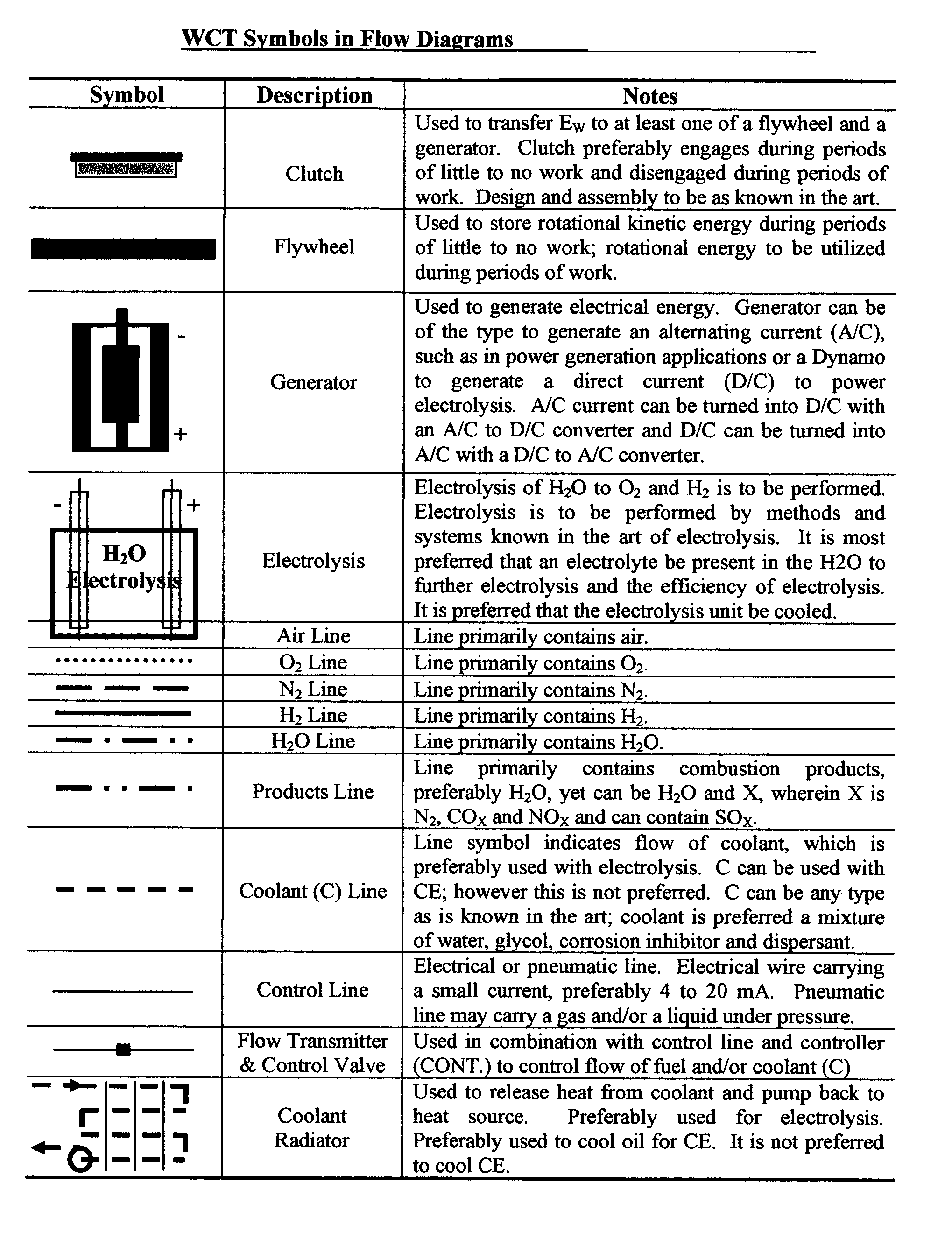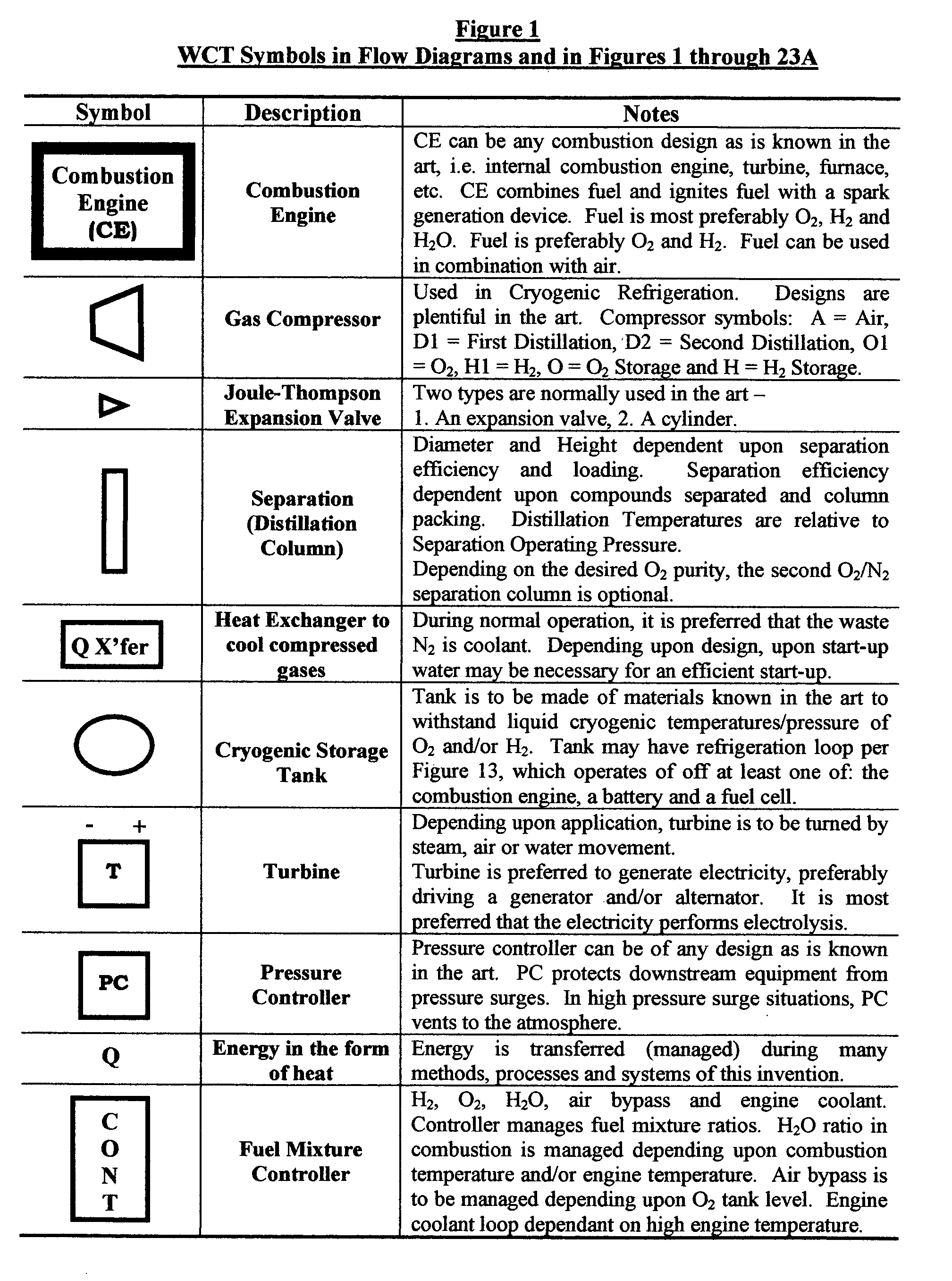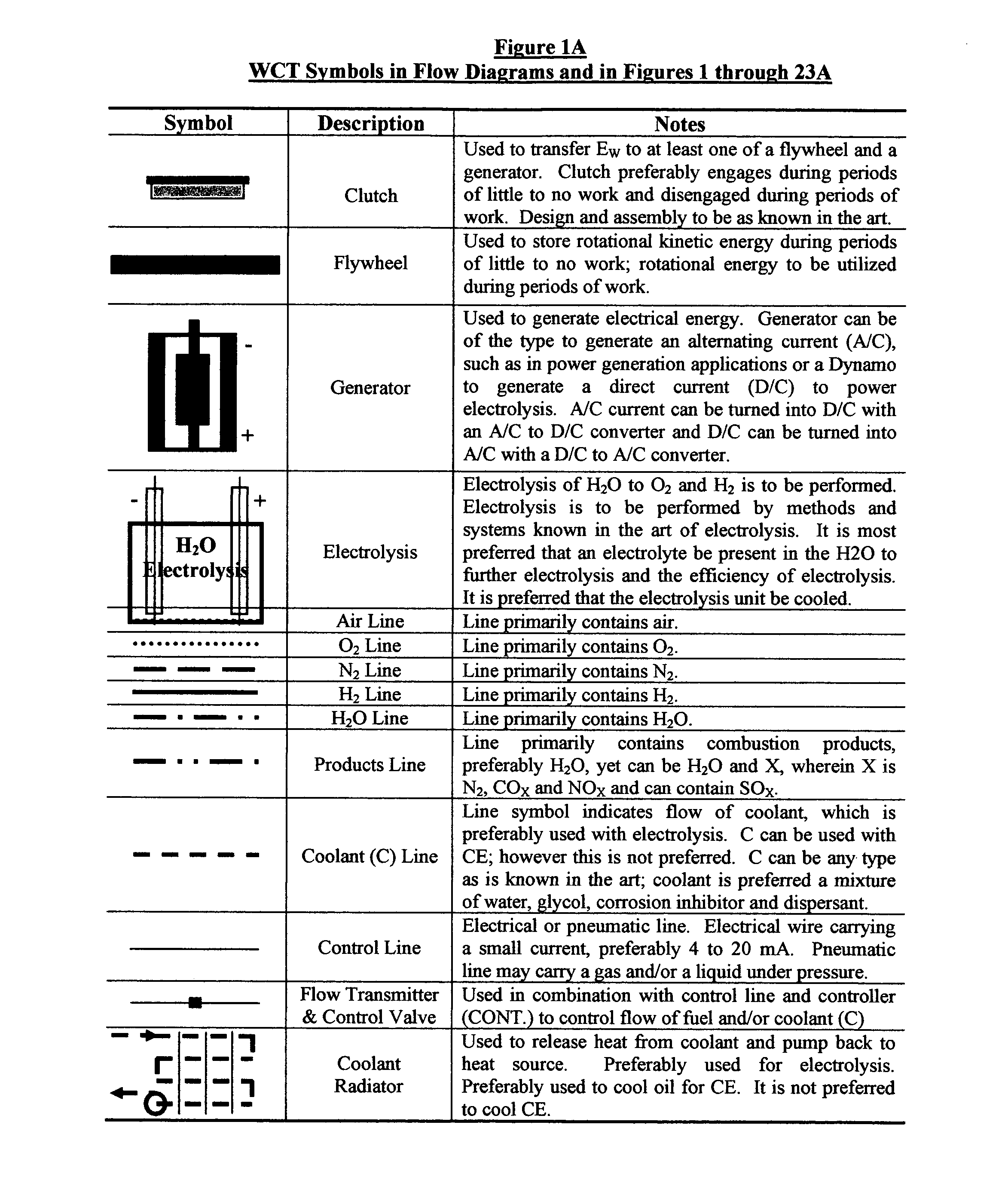Water combustion technology - methods, processes, systems and apparatus for the combustion of hydrogen and oxygen
a water combustion technology and hydrogen and oxygen technology, applied in the field of water combustion technology, can solve the problems of inability of plant life to convert enough of manmade cosub>2 /sub>2 into osub>2, difficult temperature management of fossil fuel combustion systems, and toxic to all human, animal and plant life. the effect of reducing the number of o2 and o2
- Summary
- Abstract
- Description
- Claims
- Application Information
AI Technical Summary
Benefits of technology
Problems solved by technology
Method used
Image
Examples
example 1
[0150] A traditional gasoline internal combustion engine obtains approximately 20 miles per gallon. Performing an energy balance on the engine, according to FIG. 2:
EF=EW+EEX+EC+Efric+CE
EF=20 mpg+˜35% EF+35% EF+˜9% EF+1% EF
EF=EW+˜80% EF in energy losses for internal CE(s).
EF=20 mpg+80% EF; EF=100 mpg and EW˜20% EF
Again,
EF=EW+EEX+EC+Efric+CE [0151] Assuming: 1) complete engine insulation, 2) a steam turbine with 80% efficiency, 2) a generator with 90% efficiency and 3) an electrolysis unit with 80% efficiency turns EX and EC together into approximately 30% EF
[0152] Using WCT,
EF=EW+30% EF+˜9% EF+˜1% EF
EF=EW+˜40% EF (energy losses); EW(WCT)=60% EF
example 2
[0153] Referencing CRC Handbook of Chemistry and Physics, the total available combustion energy for n-Octane is approximately 1,300 kcal / mole; at 114 lb / lb mole EF=11.4 kcal / g and at 454 g / lb. EF=5176 kcal / lb. (This excludes endothermic losses in the formation of NOX.) Further, the density of n-Octane is approximately 5.9 lb / gallon, which leads to energy figures for n-Octane in the average automobile:
[0154] EF˜100 mpg=17 mile / lb.=5176 kcal / lb.; EW˜20 mpg=3.4 mile / lb.=1143 kcal / lb. The total available energy for the combustion of hydrogen is 68 kcal / mole; at 2 lb / lb mole EF=34 kcal / g=15436 kcal / lb. Therefore, on a mass basis, H2=34 / 11.4˜3 times more energy per pound.
[0155] Using WCT, 60% / 20%=3 times more efficient. Correlating, energy figures for WCT in the average automobile: [0156] First, the fuel availability must be calculated. H2 is 100% as delivered. Since cryogenics are at least approximately 16% efficient, the production of O2 is conservatively estimated to be 16% efficient...
example 3
[0158] According to the Chemical Market Reporter, H2 has a market price of approximately $0.50 / lb. and gasoline has a price of approximately $1.60 per gallon or approximately $0.27 per pound. Utilizing traditional hydrocarbon combustion technology in transportation, the cost per mile for fuel is: [0159] $0.27 per lb. / 3.4 mile per lb.=$0.08 per mile for gasoline
[0160] Utilizing the WCT with $0.50 / lb. H2, the cost per mile for fuel is: [0161] $0.50 per lb. / 21.3 mile per lb.=$0.023 per mile [0162] (This calculation can be altered to the current market price of hydrogen.)
PUM
 Login to View More
Login to View More Abstract
Description
Claims
Application Information
 Login to View More
Login to View More - R&D
- Intellectual Property
- Life Sciences
- Materials
- Tech Scout
- Unparalleled Data Quality
- Higher Quality Content
- 60% Fewer Hallucinations
Browse by: Latest US Patents, China's latest patents, Technical Efficacy Thesaurus, Application Domain, Technology Topic, Popular Technical Reports.
© 2025 PatSnap. All rights reserved.Legal|Privacy policy|Modern Slavery Act Transparency Statement|Sitemap|About US| Contact US: help@patsnap.com



